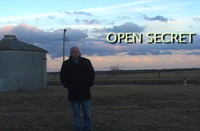Creating Your Documentary Climax
Last year we began editing a personal documentary about a man’s quest to understand why he was adopted. Directed by NPR reporter Steve Lickteig, “Open Secret” had a big problem at early rough cut stage that many filmmakers face: there was no obvious climax scene.
At first, we considered making Steve’s upcoming wedding the film’s climax, but we quickly nixed this idea. Although emotionally intense for the participants, the happy event would not translate into emotional intensity for the audience because it did not show the protagonist calling forth a supreme effort to reach his goal.
In time, when it became clear that Steve’s birth mother would not attend his wedding, Steve and his editorial team (including Bret Sigler, a collaborating editor with New Doc Editing; myself; and Steve’s brilliant friend Charlotte Stoudt) considered the idea of filming a final “showdown” conversation between Steve and his birth mother.
The concept of contriving a climax by arranging for people to “argue” on camera is not a new one. Nor is it unethical, as long as the participants have been having a row anyway.
Sometimes filmmakers get lucky and capture climactic family discord on camera organically (see the ITVS-funded “Daughter From Danang”, 2002, available on Netflix). But if that doesn’t happen, and you’re running out of time, consider extending your directorial influence to arrange for your characters to air their grievances and reach for a resolution in a filmed conversation.
In Steve’s case, he consciously amplified the conversation setting by asking his birth mother to meet him in his Kansas hometown and filming the conversation outdoors.
As it happened, the heavens parted and dumped rain that day, so mother and son talked under a protected gazebo. It was an evocative setting.
The argument evoked abundant anger, teary eyes, and even a revelation for the protagonist, which our editor Bret crafted into a riveting climax scene that flowed from conflict to acceptance.
I’m proud to say that Steve’s documentary “Open Secret” was recently accepted at the prestigious Toronto Hot Docs Film Festival, the largest documentary festival in North America!
If you’re considering creating a climax rather than waiting for one to happen, you’ll want to consider whether or not to let the audience in on the fact that you asked your characters to come together for the purpose of filming a dispute. If they would have argued (and perhaps already have) anyway, you may not feel ethically obligated to let your viewers know what you are doing behind the camera.
But if your request provokes a conversation that wouldn’t have happened otherwise, your audience will want to know that the director had a hand in matters.
Don’t worry. Most viewers not only appreciate such transparency, but they are engaged by the “story behind the story”.
To learn more techniques about how to direct and edit engaging climax scenes for your character-driven documentary, check out my online seminar “Editing the Character-Driven Documentary” at https://newdocediting.com/land/editingdocumentaryecourse/
